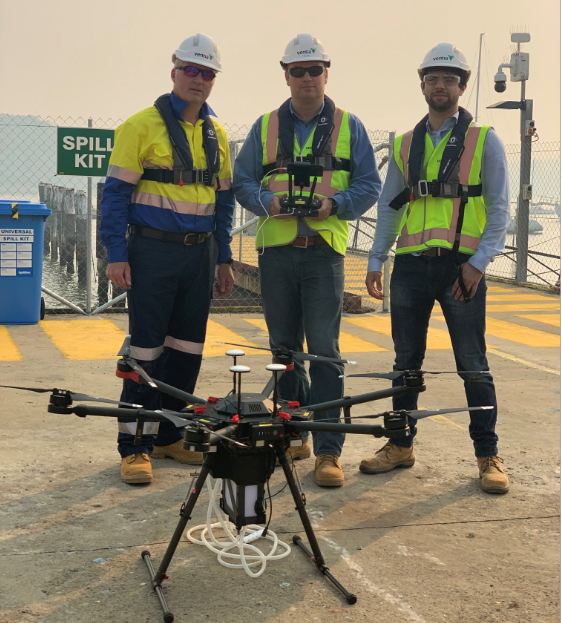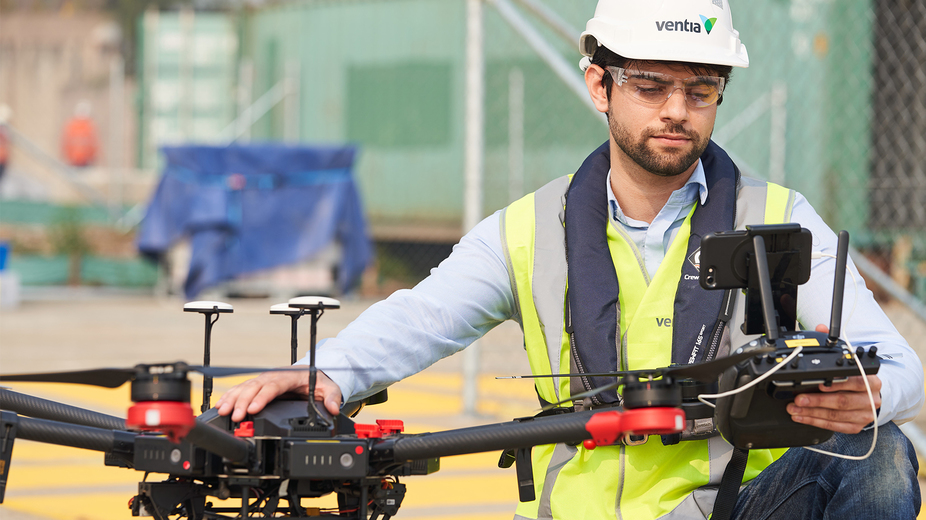For Melbourne Water, monitoring is crucial to ensuring water quality, but sampling from Treatment Plants and reservoirs can be challenging. Our environmental monitoring team, in conjunction with pilots in our Drone solutions program, developed aerial drone sampling techniques as a way of taking water samples from dangerous and hard to reach waterways while keeping our people safe.
This pilot project, run in collaboration with our client, proved the effectiveness of this technology for this and other potential uses, including sampling algae and recognising algal blooms.
Challenges faced included finding a suitable type of drone and identifying workable equipment and methods to obtain samples at various water depths.

On-site at Kendall Bay exploring drone innovations
Customising equipment for the job
The team procured an off-the-shelf drone and standard equipment, before developing their own adaptable attachments and technology.
One of the key challenges was in designing and developing a set of accessories that:
- could be attached to the drone to retrieve the water samples effectively
- would not interfere with the operation of the drone
- complied with Civil Aviation Safety Authority (CASA) regulations.
For example, the team assessed and tested several types of containers, tethers and hooks.
Initially, a mid-sized water resistant hexacopter was chosen as the drone. Radio controls were used to operate a hook to release and retrieve the sample container, which was attached to the drone by a light plastic chain tether.
The samplers take near-surface samples and can be fitted with an electronically activated valve, which can be programmed to take samples at different depths to surface.
With the pilot program a success the team are now able to sample water from dangerous waterways such as effluent ponds, flooded rivers or streams, as well as previously hard to reach waterways, such as no-boating zones near infrastructure like weirs and offtakes.
They have also moved on from the mid-sized hexacopter drone to testing the latest technology DJI custom water sampling drone (pictured) to help ensure greater testing accuracy and the GPS tagging of locations.
